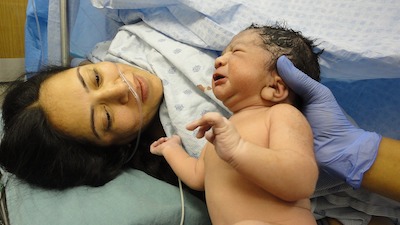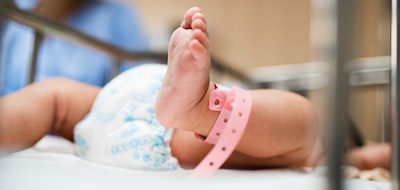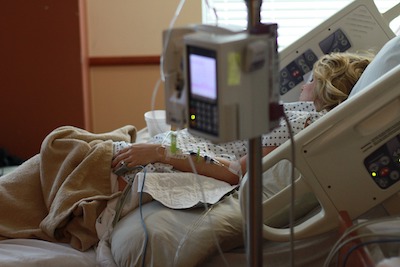Cesarean delivery rates are rising globally. As a result, doctors and researchers are debating the potential benefits and risks of this procedure. They are looking at the effects for both the mother and the baby when thinking long-term.
Cesarean sections are sometimes unavoidable due to health risks. However, there are some real concerns surrounding this form of delivery. It is important for expecting mothers to be aware of both the benefits as well as the risks.
Let’s go over some of the latest research about cesarean sections. We’ll break down the benefits and risks of C-section, so you could decide which is your preferred way to deliver when the big day comes.
This article is based on two scientific articles:
“Long-term risks and benefits associated with cesarean delivery for mother, baby, and subsequent pregnancies: Systematic review and meta-analysis” by O.E. Keag, J.E. Norman and S.J. Stock and “Influence of cesarean section on mother-baby interaction” by G. Gathwala and I. Narayanan.

Health Benefits Of C-Section
Cesarean sections are relatively intrusive and complex procedures. However, they do offer potential benefits to both the mother and child.
The following research was conducted with women who delivered their children through natural means or by cesarean section. These studies were done on a large sample size of more than 1,000 female participants. Results were collected approximately one year after their respective births.
-
Emergency Scenarios
The option of elective cesarean section is progressively becoming more popular. However, these procedures are still commonly used as a result of emergency scenarios.
Mothers may prefer vaginal birth. However, this isn’t always possible. Cesarean sections have proven to be a crucial plan to fall back on if necessary. Studies have shown that cesarean sections, if done correctly and in enough time, can save the life of the child and mother.
These procedures have proven to combat other complications that may have come about if the birth had been attempted through natural measures. As a result, new technology has made cesarean sections much more commonplace.
-
Lower Rates Of Urinary Incontinence
One primary benefit recognized in the studies is a reduced rate of urinary incontinence in the women who underwent cesarean sections. This is in comparison to women who had a natural vaginal birth.
The physicality of childbirth weakens the pelvic floor. This can often result in long-term urinary incontinence. It can result from excessive damage to nerves, as well it can be the outcome of the physical stress placed on the body during birth. These effects can last for years after.
Cesarean sections, while intrusive, cause less long-term damage to the organs involved with childbirth. They minimize the tremendous amounts of stress and pressure that a woman would usually undergo. Therefore, these operations can result in lower rates of urinary incontinence for new mothers.
-
Lower Rates Of Pelvic Organ Prolapse
Pelvic Organ Prolapse is another potential side-effect of natural childbirth. With natural childbirth, the muscles surrounding the organs can droop. This results in urinary and anal incontinence. Cesarean sections have proven to lower the rates of this condition.
-
Reduced Labor Pains
In some cases, a planned cesarean section can mean a smoother labor process for the mother.
Reduced labor pains are a possibility because the operation can be planned in advance. This means the mother will not come up against any unexpected situations due to the complications of normal labor.
Additionally, it relieves some of the stress and anxiety of childbirth when cesarean delivery is planned in advance. The mother will most likely not face labor that lasts a long time. Instead, she will just have to show up at the previously agreed upon time to deliver her child.
Again, cesarean sections cannot always be planned. Sometimes, they are necessary for emergency scenarios.
C-Section Risks
Cesarean sections also have potential risks involved. These risks more commonly impact the health of the child. However, some do have impacts on the mother as well.
-
Attachment
Study by G. Gathwala and I. Narayanan looked at the attachment of mother and child after a normal vaginal birth in comparison to a cesarean section.
Shortly after natural vaginal birth, the child is placed with the mother and the mother is soon in charge of all care responsibilities. The mother is given more hands-on interaction with her child at an earlier time than most mothers who underwent a cesarean section.
Cesarean sections are rather intrusive procedures. They require a longer recovery period for both the mother and child. This means that a nurse or other medical professional usually handles the child immediately following birth. They will not have the same first experience with the mother as a child born through the vaginal route.
Mothers who had not undergone a cesarean section showed greater affection. They formed a stronger bond with their newborn during observation. The results of the study showed that there were higher attachment levels between mother and baby when the child was born through non-surgical and natural means.

-
Health Risks For The Baby
Cesarean sections offer some definite health benefits for the mother. That being said, they do present some potential long-term chronic health issues for the child.
Results from the studies by O.E. Keag, J.E. Norman and S.J. Stock show that children up to the age of 12 showed higher rates of asthma than children born through natural means. Children up to age 5 showed higher rates of childhood obesity than their counterparts in the study.
Links to higher rates of allergies and certain types of diabetes also appeared in these children, among other chronic illnesses.
These issues are relatively normal and have many cures and medications. However, they are genuine risks. Expectant mothers will want to take these into account when faced with the choice to have a cesarean section.
It is not known whether these risks are a result of the actual procedure or other factors involved. Regardless, the evidence collected shows that there is a reason to believe these complications are correlated in some way.
-
Complications With Future Pregnancies
Another severe concern that cesarean sections present is complications to any subsequent pregnancies. These complications are more serious than other concerns. Mothers should take them into consideration if they may want more children in the future.
-
Subfertility And Perinatal Death
Rates of subfertility among mothers who had a cesarean section were relatively higher than those who gave birth naturally. This is a cause for worry among first-time mothers. It is a good reason to lean toward a natural birth if the circumstances allow.
Higher rates of perinatal death were also found as a result of previous cesarean sections. This is the primary outcome of subsequent births after a cesarean section. Mothers and their attending doctors should not take lightly the risk of this outcome.
Subsequent deliveries after an initial cesarean showed an increased risk for both stillbirths and miscarriages.
-
Placenta Previa
Another relatively elevated risk that can come with cesarean deliveries is placenta previa. This condition results in excessive vaginal bleeding. This bleeding occurs during the latter stages of pregnancy or delivery. There is usually little to no pain associated with this condition. However, doctors may recommend bed rest until after delivery.
Another downside to this condition is that it usually results in a necessary cesarean section. This can ultimately lead to other complications as shown from the results of these studies.
-
Major Operation
Cesarean sections are common operations and take place daily. However, they are still considered to be a major operation. This means that the mother will have to take more time to recover than mothers who gave natural birth.
Additionally, any major procedure can result in unforeseen complications for the patient. Infections and other visceral injuries are common consequences of these operations. Their effects can range in severity.
Age and overall health will play a role in this recovery process. However, it should be understood that these surgeries are invasive and can become a complicated operation.

Which Is The Best Delivery Option?
So which is the better delivery method – natural birth or C-section?
Unfortunately, there isn’t a definitive answer. The purpose of these studies was not to sway expecting mothers towards natural delivery or cesarean section. Rather, their aims were to provide all women with what they need to know before delivering.
Ultimately, these results showed that there are more benefits than risks for mothers with C-sections. But, there are more risks for children born through cesarean sections. C-sections are not always an elective choice for mothers. If it is a choice for you, you’ll want to consult with your physician about these benefits and risks.
Many previous studies of cesarean sections did not take the long-term effects into account. Instead, they looked at short-term and immediate effects. The above research has information that measures the implications of a cesarean section in the years to come.
That being said, expecting mothers should approach the findings of these studies with caution. This research is a reflection of recent studies. Not all of these health benefits and concerns have the potential to affect new mothers and their children.
It’s best to talk to your doctor before delivery about what method they think is right for your birth. After all, they’ve been monitoring your birth and can advise you best.
Bibliography:
Please keep in mind that this article IS NOT a medical advice. The purpose of this article is informative. It is an overview of recent studies. It’s not a substitute for consultation with a doctor. Always consult your health concerns and decisions with your doctor.
Don’t forget to follow LittleBabyGear on Facebook and visit the homepage! 🙂

